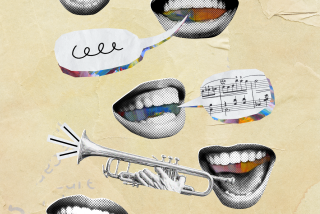‘The Story of Spanish’ offers a rich history of the language
Every summer, millions of Americans repeat again and again a word that has its roots in Taino, the Caribbean language spoken by the people Christopher Columbus met when he first landed in the Americas.
Spanish speakers brought the word into their language as barbacoa. Cooking beef on sticks over a fire was an early “fusion food” as we learn in the engaging new nonfiction book “The Story of Spanish.” What English speakers have come to call “barbecue” combines “Arawak technique, European meats and Mexican flavors.”
Every language, of course, contains within its structure and vocabulary a record of its past. There’s a lot of Spanish embedded in English thanks to North America’s proximity to Spanish-speaking lands and to the United States’ conquest of part of Mexico in the 19th century. In the last quarter century, a big wave of immigration has helped make Spanish the unofficial second language of the United States.
As the authors of “The Story of Spanish” point out, Americans study Spanish more than any other language. But today, many Americans are deeply ambivalent about it. To some, it’s a language of backwardness spoken by people who’ve entered the country illegally who steal American jobs; Americans who study Spanish do so mostly because they need it for work — or so the thinking goes.
But Spanish is so much richer than that — no matter your political leanings. “Spanish is a cluster of contradictions,” write Jean-Benoit Nadeau and Julie Barlow, the authors of previous books about the spread of another language Americans like to learn, French. “Over its history, Spanish became one of the most organized and systematic tongues in history, and a finely honed tool used to express disorder and passion.”
Spanish, we learn, is the major language closest to Latin. Its roots are in “vulgar Latin,” the language of the common people and the provincials of the Roman Empire. Spanish is “by far the most phonetic and most transparent of all Latin languages,” Nadeau and Barlow write. Its simplicity makes it a relatively easy language to learn, and it owes that simplicity in part to the influence of another language brought to the Iberian Peninsula by invaders: Arabic. In their work to formalize their language, early Spanish grammar mavens were deeply influenced by the rigor of Arab scholars. Many Arabic words came to be incorporated into Spanish as well; among them limón (lemon), naranja (orange) and the spice jazmín (jasmine).
The language of Cervantes has come to be spoken in more than 20 independent countries and in regional dialects that are mutually intelligible. A man from Buenos Aires can easily fall into conversation with someone in Mexico City, Havana and also in Los Angeles and Houston. The story of how that happened is complex, but Nadeau and Barlow do an excellent job of transforming it into an accessible and lively narrative.
The 13th century King Alfonso X helped introduce the first Spanish spelling conventions. In the 15th century, the Andalusian scholar Antonio de Nebrija became the first European to study the grammar of language spoken by common people. In 1495, he added the first Native American word to his Spanish dictionary: canoa, or canoe.
Though many words and place names in native languages such as Taino and Nahuatl became a part of the Spanish vocabulary, they never posed a threat to Spanish as the dominant language of Latin America, largely because of the death of so many native people to disease and the violence of the conquest.
Nahuatl, the language of the Aztecs, survives, but its impact on Mexican Spanish is subtle. Nadeau and Barlow fail to mention how Nahuatl has shaped the spoken cadences of Mexican Spanish, an influence that is also felt in Chicano English, as U.S. linguists such as Carmen Fought have written. (In effect, the spoken English of places such as East L.A. carries the linguistic DNA of the Aztecs.) But they do note Nahuatl’s presence in many Mexican regionalisms and in the name of the patron saint of Mexico, the Virgin of Guadalupe, whose name means “She Who Crushes Snakes.”
“The Story of Spanish” is a popularization of the work of numerous linguists, including Nicholas Ostler and his seminal “Empires of the Word: A Language History of the World.” As such, “The Story of Spanish” can’t help but repeat a few truths of linguistic history that have nevertheless been attacked as un-American by the English-only movement. Among other things, the authors show how Spanish (and English) have grown from contact with other cultures and languages, and how there really never is such thing as language “purity.”
Mexico’s vaquero (cowboy) culture gave U.S. English many beloved phrases, including some that don’t sound Spanish at all. This reader laughed out loud upon learning that the “ten-gallon hat” didn’t get its name from its size but rather from the Mexican expression “tan galán,” which translates loosely as “really handsome.”
Languages are human inventions. As with people, they’re capricious, confounding and unpredictable. It’s not surprising then that the reader of “The Story of Spanish” ends up learning a little about English too.
The Story of Spanish
Jean-Benoit Nadeau and Julie Barlow
St. Martin’s Press: 496, $27.99
More to Read
Sign up for our Book Club newsletter
Get the latest news, events and more from the Los Angeles Times Book Club, and help us get L.A. reading and talking.
You may occasionally receive promotional content from the Los Angeles Times.







